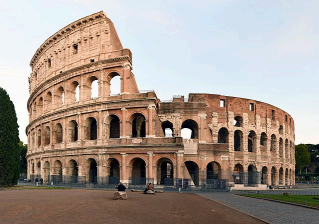After 24 long years, a sequel to the legendary Gladiator finally hits the big screen. Gladiator 2, like its predecessor, immerses the audience in the exciting and intense world of ancient Rome, with dramatic storytelling and epic battles set in the mesmerizing Colosseum. While the movie is a work of fiction, it is based on real, tangible history and does an impressive job of portraying the world of 2,000 years ago with notable accuracy. Through the screen, audiences are reminded of the history of this ancient empire.
The Roman Colosseum, an ancient elliptical amphitheater, stands as one of the most iconic buildings in the world. Despite its age, it has withstood the test of time and remains a symbol of ancient Rome. Completed in 80 AD, the Colosseum was the heart of Roman entertainment. People of all classes gathered to watch a variety of spectacles, ranging from gladiator games to animal hunts.
However, the Colosseum served more than just an entertainment purpose. By hosting these games, emperors displayed their power and generosity, gaining the favor of the masses. Furthermore, during difficult times, the spectacles distracted the public from political corruption and the empire’s struggles. The building itself, like many historical monuments, reflected and legitimized the emperor’s power. These often free events symbolized Rome’s might and reflected its cultural values.
Various spectacles were held at the Colosseum, but it is most commonly associated with gladiatorial combat. Gladiators captivated audiences like no other spectacle, bringing life to the arena. Gladiators were typically slaves, prisoners of war, or criminals, much like the iconic Maximus from the movie. These men were trained in special schools called Ludi Gladiatorii. While many gladiators met a short and brutal end, some, on rare occasions, earned their freedom through victory.
The Colosseum itself is a piece of history to be admired—a testament to ancient Roman architecture. Despite being completed 2,000 years ago, the amphitheater could hold up to 50,000 spectators and even accommodate naval battles. The structure featured arches and tunnels, demonstrating architectural techniques that were truly ahead of their time. As such, the Colosseum remains one of the most impressive architectural achievements in history.
In conclusion, Gladiator 2 not only delivers Hollywood action but also reminds its audience of the rich history of the ancient Roman Empire. Through immersive storytelling and epic battles, the film offers a captivating glimpse into the past.

By. Donghun Song


